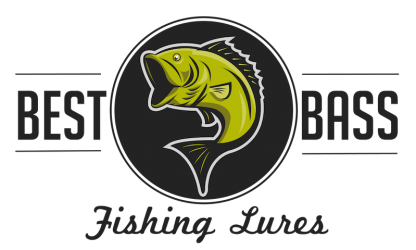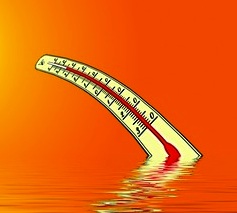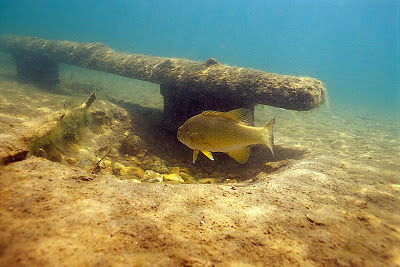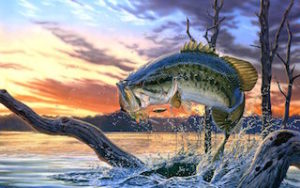Spring is arguably the best time of year for bass fishing. But bass behavior changes more drastically in the spring than during any other season. This is because bass spawn in the spring, and during the spawn phases their feeding activity goes up and down like a rollercoaster.
Lure selection and technique adjustments are two essential measures an angler must take to be successful bass fishing in the spring. As feeding behaviors change, your strategy must change as well if you want to keep the bite going.
On this page we’re going to cover the best spring bass lures for each phase of the season. But if you’re just looking for the most versatile lure that works best during all seasons then get yourself a BiCO Original Jig.
Jigs can be worked extremely slow in colder water in early spring or fished faster as a swim jig when temps increase. BiCO Original Jigs work great for both techniques. Now let’s dive deeper in to the pros and cons of bass fishing in spring.
Contents
Spring Bass Fishing
As spring sets in, water temperatures and bass feeding activity are on the rise. Water temperature is one of the most important factors in determining bass behavior. Bass are a cold-blooded species, which means their body temperature is directly related to their environment.
The ideal temperature for optimal bass feeding activity is generally between high 50’s and low 70’s. Temperatures above or below this range tend to make bass less aggressive. It also causes them to seek out more favorable temps in either shallow or deeper water.
What defines deep is relative to the overall depth of the body of water. Whether the deepest point is ten feet or thirty feet, bass will generally be found there during periods of extreme heat or extreme cold. This is because water temperature at the deepest point tends to be more stable.
Although deep water plays a role in spring activity, most of spring bass fishing will take place in the shallows, where spawning takes place. But before you get out to fish the warming shallows, it’s important to figure out what phase of the spawn cycle the lake is in.
The Spring Spawn Cycle
The spring bass fishing season is divided into three phases, which together make up what is known as the spawn cycle:
- Pre-Spawn
- Spawn
- Post Spawn
Bass behave very differently during each phase, so the best lures and techniques will change from phase to phase. It’s also important to note that the spawn cycle can begin at different times of any given year, as well as vary from lake to lake.
This is true even between lakes that are located close to each other. For instance, a shallow lake usually warms quicker than a deeper one, causing the spawn cycle to begin sooner. For that reason, you should always be checking the water temperature during the spring so you know what phase of the spawn cycle bass are in.
Most bass anglers get the water temperature from their fish finders. If you don’t have one then using any thermometer will work fine. Water temperatures can fluctuate like crazy in the spring so don’t assume the temperature is the same day to day. Or even hour to hour during the course of a day.
Pre-Spawn Phase
When bass enter the pre-spawn phase, it’s in conjunction with the rest of the body of water warming up after winter. As water temperatures climb up in to the high 40’s to mid 50’s range, bass begin slowly making their way towards the shallows. They are in search of food to restore energy that was depleted during the winter months.
It’s between this point and the spawn phase that bass fishing can be pretty active. When water temperatures are hovering in the mid-fifties you can expect bass to be feeding.
They will be actively feeding, but not full throttle just yet. Their energy levels are not fully restored just yet so you want to stick to slower-moving lures. Here are some of the best lures for pre-spawn.
If spring temperatures rise slowly then you can have a nice window of bass fishing in the pre-spawn. But if they increase rapidly bass will quickly go into spawn mode. However long the window is, you should take advantage of every minute because the bite changes dramatically as we enter the next phase: the spawn.
Spawn Phase
Water temperatures that reach the high 50’s to mid 60’s generally signal the beginning of the spawning phase. For bass fishing, the action will slow down significantly.
During the spawn, male bass make rounded nests called beds. They form them with their tails, usually on sandy or gravelly bottoms. Typically, beds are located along the shoreline, in about two to five feet of water.
The clearer the water, the deeper the beds are located. And vice versa, the murkier the water, the shallower the beds will be located.
When the bed is complete, the male bass with try to entice females into it. If successful, the female bass will enter and lays her eggs. Once the eggs have been laid the male fertilizes them.
At this point bass immediately stop feeding. This “lockjaw” phase can last two to four weeks, as the males will be guarding the eggs full time and females head to deep water to recover.
You can forget about catching the females during this period, but you can still catch the males. While guarding the beds, male bass will ferociously attack any natural predictors that come too close.
Sunfish, crayfish, and other species will be relentlessly trying to make a meal of the bass eggs. When in defense mode, male bass are not attacking to feed but strictly to protect the eggs.
Bed Fishing
Catching males that are guarding nests is referred to as bed fishing. It’s when you cast at a bed in hopes of tricking the bass into thinking your lure is a natural predator trying to eat his eggs. This is best done with very small finesse lures.
The problem is bass are on such high alert during this phase that they will often identify lures as unnatural and ignore them. Bass fisherman will spend hours on a single bed in hopes of landing a big male.
Some argue that bed fishing is unethical, and bass should be left alone during the spawn to preserve their abundance. Anglers have been arguing the ethics of bed fishing forever. But we won’t get into that here.
Post Spawn Phase
When the spawn phase is over and the baby bass are too big and active for the males to keep guarding them, the adult males will begin to abandon their beds and resume normal feeding behavior.
Once the females have recovered from spawning, they will move up to the shallows to feed as well. It’s usually about five to six weeks after the actual spawn that bass fishing begins to really pick up.
This is when bass fisherman can really unleash their full arsenal of lures. All lures are in play at this point, and you can focus more on conditions like time of day and cloud cover when choosing a lure.
Late spring and early summer is when a lake is at its peak for bass fishing. Bass are in a feeding frenzy, so you do not want to miss this window of opportunity.
Especially since the action can begin to slow down as summer progresses. But with the right summer bass lures and techniques you can keep catching them right into the fall.





